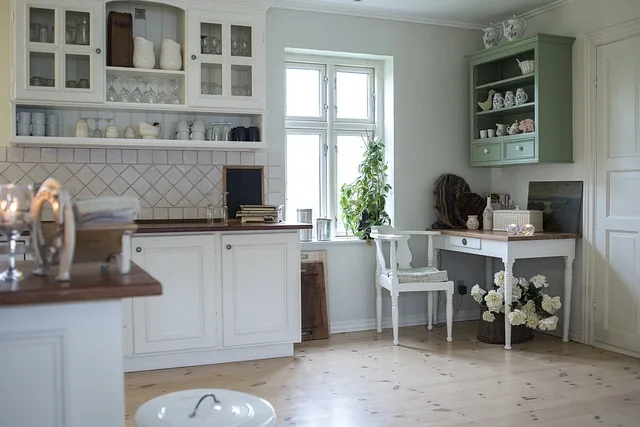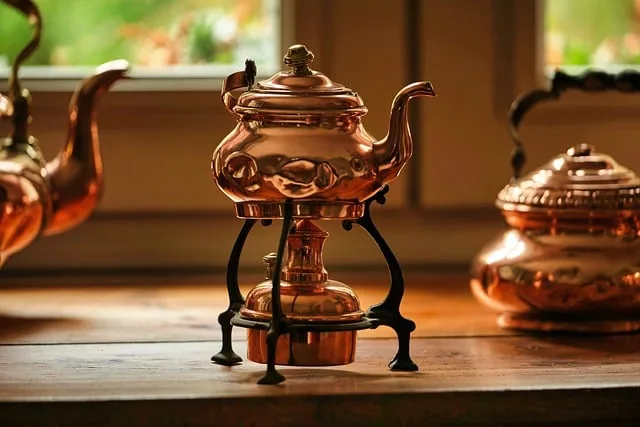First things first, gather your tools. You’ll need a miter saw, a nail gun or hammer, wood glue, and, of course, your crown molding. Think of the crown molding as the cherry on top of your kitchen sundae—it’s what makes everything look complete and polished.
Next, measure your cabinets. This is where precision comes into play. Measure the length of each cabinet where you plan to install the molding. It’s like measuring for a new pair of shoes; you want that perfect fit! Once you have your measurements, cut the molding at a 45-degree angle using your miter saw. This angle is crucial for those seamless corners that make your cabinets look professionally done.
Now, it’s time to attach the molding. Apply a bit of wood glue to the back of the molding and press it against the top of your cabinets. If you’re feeling adventurous, you can even use a level to ensure everything is straight—nobody wants a lopsided crown! Secure it in place with your nail gun or hammer, and voilà!
Don’t forget to fill in any nail holes with wood filler and sand it down for a smooth finish. Finally, a coat of paint or stain can really make your crown molding pop, giving it that wow factor.
So, are you ready to elevate your kitchen game? With a little patience and creativity, you’ll have those cabinets looking like a million bucks!
Elevate Your Kitchen: A Step-by-Step Guide to Installing Crown Molding on Cabinets
First things first, gather your materials. You’ll need crown molding, a miter saw, a nail gun, wood glue, and a level. Think of these tools as your trusty sidekicks on this DIY adventure. Once you have everything, measure the top of your cabinets. This is where precision is key—like a chef measuring ingredients for a perfect recipe.
Next, cut your crown molding at a 45-degree angle. This might sound tricky, but it’s just like slicing a cake; you want those clean edges to fit together seamlessly. After cutting, dry-fit the pieces to ensure they align perfectly. It’s like trying on a new outfit before the big event—make sure it looks just right!
Now, it’s time to attach the molding. Apply wood glue to the back of the molding and press it against the cabinet. Use your nail gun to secure it in place. Think of this step as giving your cabinets a stylish hat—they’ll look so much more polished!
Once everything is in place, fill any gaps or nail holes with wood filler. Sand it down for a smooth finish, and then paint or stain to match your cabinets. Voilà! You’ve transformed your kitchen into a space that feels both elegant and inviting. So, are you ready to roll up your sleeves and get started? Your dream kitchen awaits!
Crown Molding Magic: Transform Your Kitchen Cabinets with These Expert Tips

First off, think of crown molding as the cherry on top of your kitchen sundae. It adds that finishing touch that ties everything together. When choosing your molding, consider the style of your kitchen. Are you going for a modern vibe or something more traditional? The right crown molding can complement your cabinets beautifully, enhancing their design rather than overshadowing it.
Now, let’s talk installation. If you’re feeling adventurous, you might want to tackle this project yourself. It’s like a puzzle—measure twice, cut once! But if you’re not the DIY type, don’t hesitate to call in the pros. They’ll ensure everything is perfectly aligned and securely attached, giving you that polished look.
Don’t forget about paint! A fresh coat can work wonders. Whether you choose to match the molding to your cabinets or go for a bold contrast, paint can breathe new life into your space. Think of it as a wardrobe change for your kitchen—suddenly, it feels fresh and exciting!
Lastly, consider adding some lighting. Installing LED strips along the top of your cabinets can create a stunning glow that highlights your new crown molding. It’s like adding a spotlight to your kitchen’s best features, making them shine even brighter.
DIY Delight: How to Add Crown Molding to Your Kitchen Cabinets Like a Pro
First off, gather your materials. You’ll need some crown molding, a miter saw, adhesive, and a nail gun. Think of the crown molding as the icing on your cake; it’s what makes everything look polished and complete. Measure your cabinets carefully—this is where precision is key. You wouldn’t want to bake a cake without measuring your ingredients, right?
Next, cut your molding at a 45-degree angle. This might sound tricky, but it’s easier than it seems! Just imagine you’re slicing a pizza; you want those perfect slices to fit together seamlessly. Once you’ve got your pieces cut, it’s time to attach them. Apply adhesive to the back of the molding and press it firmly against the top of your cabinets. Use your nail gun to secure it in place. It’s like giving your cabinets a stylish hat!
Now, here’s a pro tip: don’t forget to fill in any gaps or nail holes with wood filler. This step is like smoothing out the rough edges of a diamond; it makes everything look flawless. Finally, a fresh coat of paint or stain can really make your crown molding shine. Picture it as the final touch of glitter on your masterpiece.
So, are you ready to transform your kitchen into a space that wows? With a little effort and creativity, you’ll have those cabinets looking like they belong in a magazine!
From Drab to Fab: The Ultimate Crown Molding Installation for Kitchen Cabinets
Imagine walking into your kitchen and feeling like you’ve stepped into a magazine spread. Crown molding is like the cherry on top of your cabinetry sundae. It adds that touch of elegance and sophistication, making your cabinets pop with personality. But how do you get from drab to fab? Let’s break it down.
First off, choosing the right crown molding is crucial. You want something that complements your kitchen’s style. Whether you’re going for a classic, modern, or rustic vibe, there’s a molding out there that’s just waiting to be your kitchen’s new best friend. Think of it as picking the perfect accessory for an outfit—it can make all the difference!
Next, installation might sound intimidating, but it’s easier than you think. With a few tools and a little patience, you can tackle this project like a pro. Start by measuring your cabinets and cutting the molding to size. It’s like piecing together a puzzle—just make sure everything fits snugly. And don’t forget to use a level; nobody wants a lopsided crown!
Once it’s up, you’ll be amazed at how the crown molding elevates your kitchen’s aesthetic. It’s like giving your cabinets a stylish haircut—suddenly, they look fresh and new. So, are you ready to take the plunge and turn your kitchen into a fab space? Your cabinets are waiting for their moment to shine!
Crown Your Cabinets: A Beginner’s Guide to Stunning Kitchen Upgrades
Crown molding is like the cherry on top of your kitchen sundae. It adds that finishing touch, elevating your cabinets from ordinary to extraordinary. But don’t worry if you’re a beginner; this guide will help you navigate the world of kitchen upgrades with ease.

First off, let’s chat about what crown molding actually is. Think of it as a decorative trim that sits at the top of your cabinets, creating a seamless transition between the cabinetry and the ceiling. It’s not just about looks; it also helps hide any imperfections where the cabinets meet the wall. Who doesn’t love a little camouflage?
Now, you might be wondering, “How do I choose the right style?” Well, it’s all about your kitchen’s vibe. If you’re going for a modern look, sleek and simple designs work wonders. For a more traditional feel, ornate and detailed moldings can add a touch of elegance.
Installation might sound daunting, but it’s easier than you think! With a few basic tools and a little patience, you can transform your space. Just measure twice, cut once, and you’ll be on your way to crown your cabinets like a pro.
So, are you ready to take the plunge? Your kitchen deserves a little royalty, and crown molding is the perfect way to give it that royal treatment!
Mastering Crown Molding: Essential Techniques for Kitchen Cabinet Installation
First off, measuring is your best friend. Think of it as the foundation of a house; without solid measurements, everything else can crumble. Grab your tape measure and jot down the height and depth of your cabinets. This will help you determine how much molding you’ll need and how it will fit. Remember, a little extra is always better than coming up short!
Next, let’s talk about cutting. This is where the magic happens! Using a miter saw, you’ll want to make precise cuts at a 45-degree angle. Picture it like slicing a cake; you want those edges to meet perfectly for a seamless look. Don’t rush this step—take your time, and double-check your angles. Trust me, your future self will thank you!
Now, it’s time to attach the molding. A good adhesive or finishing nails will do the trick. Think of it as giving your cabinets a warm hug; you want them to feel secure and loved. Apply a bit of caulk to fill in any gaps, and voilà! You’ve just transformed your kitchen into a space that feels both cozy and chic.
Finally, don’t forget about the finishing touches. A coat of paint or stain can elevate your crown molding from ordinary to extraordinary. It’s like adding sprinkles to your ice cream—small but oh-so impactful! So, roll up your sleeves and get ready to impress with your newly mastered crown molding skills!
Frequently Asked Questions
Can I Paint Crown Molding After Installation?
Yes, you can paint crown molding after installation. Ensure the surface is clean and dry, then use a suitable primer followed by paint for a smooth finish. This enhances the appearance and protects the material.
How Do I Measure for Crown Molding on Cabinets?
To measure for crown molding on cabinets, start by determining the height and depth of the cabinets. Use a tape measure to find the width of each cabinet section where the molding will be installed. Record these measurements, ensuring to account for any angles or corners. For angled ceilings, measure the angle to ensure a proper fit. Finally, add a few extra inches to each measurement for adjustments during installation.
How Do I Cut Crown Molding for Kitchen Cabinets?
To cut crown molding for kitchen cabinets, start by measuring the angles and lengths needed for each piece. Use a miter saw set to the correct angle, typically 45 degrees for corners. Ensure the molding is positioned upside down on the saw for accurate cuts. Make precise cuts for both the top and bottom pieces, and test fit them before final installation. Sand any rough edges and apply paint or finish as desired.
What Tools Do I Need to Install Crown Molding on Kitchen Cabinets?
To install crown molding on kitchen cabinets, you will need a miter saw for precise angle cuts, a nail gun or hammer for fastening, wood glue for added stability, a measuring tape for accurate lengths, a level to ensure straight installation, and safety gear such as goggles and a dust mask. Optional tools include a caulking gun for finishing touches and a stud finder for locating secure attachment points.
What Are the Steps to Install Crown Molding on Kitchen Cabinets?
To install crown molding on kitchen cabinets, first measure the cabinet tops to determine the length of molding needed. Cut the molding at a 45-degree angle for corners. Secure the molding to the cabinets using a nail gun or adhesive, ensuring it fits snugly against the wall and cabinets. Fill any gaps or nail holes with wood filler, then sand and paint or stain as desired for a finished look.